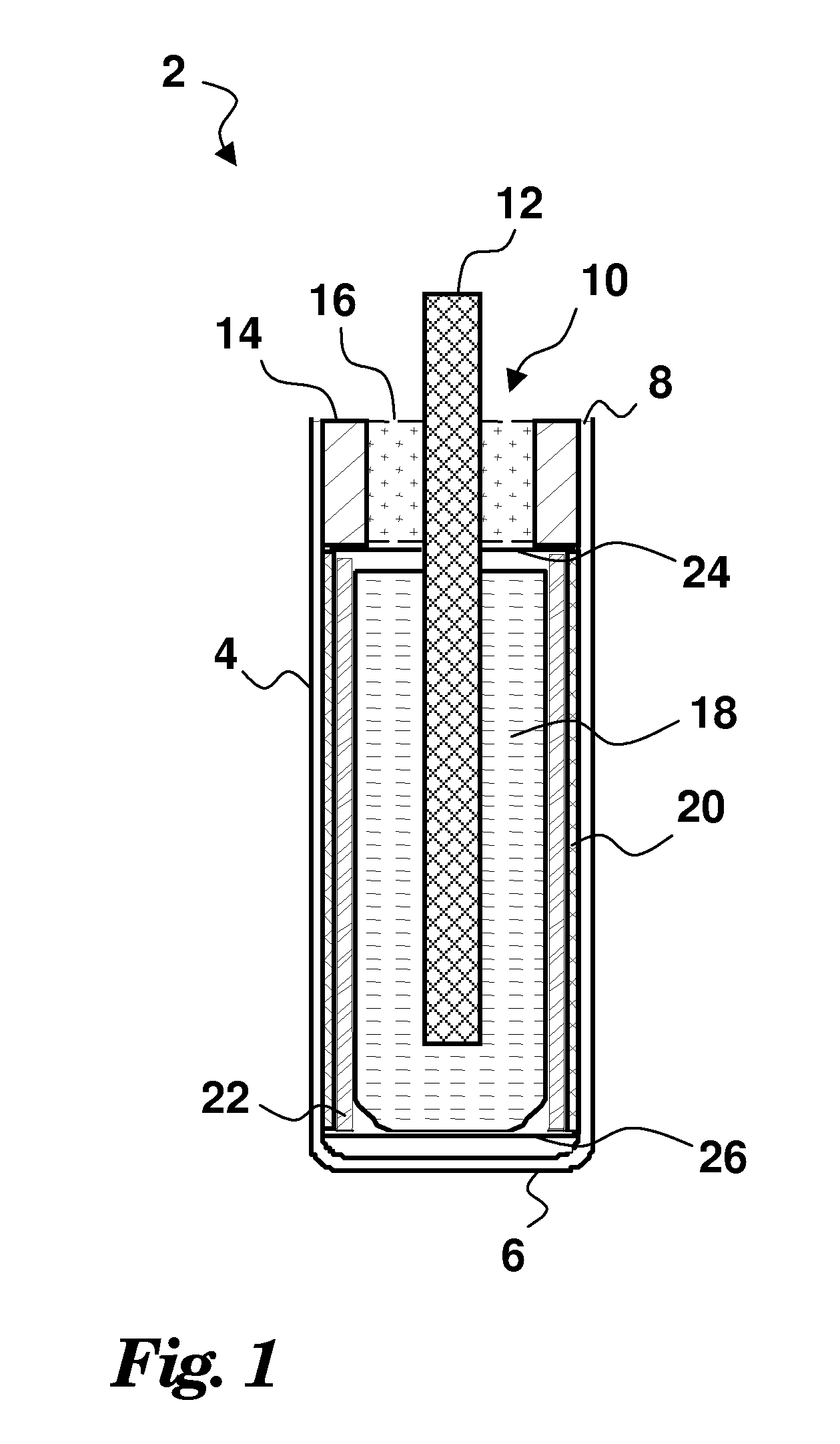Ultra-Miniature Electrochemical Cell And Fabrication Method
a technology of electrochemical cells and form factors, applied in the field of ultra-miniature electrochemical cells, can solve the problems of unsuitable methods, unfavorable application of extremely small cell electrode structures, and compound handling problems, so as to facilitate efficient repeatability and minimize the risk of electrode damage during handling
- Summary
- Abstract
- Description
- Claims
- Application Information
AI Technical Summary
Benefits of technology
Problems solved by technology
Method used
Image
Examples
Embodiment Construction
[0018]Turning now to the Drawings, wherein like reference numerals signify like elements in all of the several views, FIG. 1 illustrates an exemplary electrochemical cell 2 that may be constructed in accordance with the fabrication method disclosed herein. The cell 2 includes a case 4 whose configuration is that of a cylinder with one closed end 6 and one open end 8. The case 4 may be fabricated from titanium, stainless steel or any other suitable electrically conductive material. The open end 8 of the cell case 4 is sealed by a current collector header assembly 10 that comprises a current collector pin 12 sealed within an annular metal ring 14 by way of a glass seal 16. The annular ring 14 may be welded to the perimeter of the case open end 8 to provide a hermetic enclosure for the cell contents. The current collector pin 12 provides an electrical connection to a cathode structure 18 within the case 4. A cell anode 20 having a tubular shape is swaged against the inside wall of the ...
PUM
| Property | Measurement | Unit |
|---|---|---|
| Thickness | aaaaa | aaaaa |
| Electrical conductor | aaaaa | aaaaa |
Abstract
Description
Claims
Application Information
 Login to View More
Login to View More - R&D
- Intellectual Property
- Life Sciences
- Materials
- Tech Scout
- Unparalleled Data Quality
- Higher Quality Content
- 60% Fewer Hallucinations
Browse by: Latest US Patents, China's latest patents, Technical Efficacy Thesaurus, Application Domain, Technology Topic, Popular Technical Reports.
© 2025 PatSnap. All rights reserved.Legal|Privacy policy|Modern Slavery Act Transparency Statement|Sitemap|About US| Contact US: help@patsnap.com



